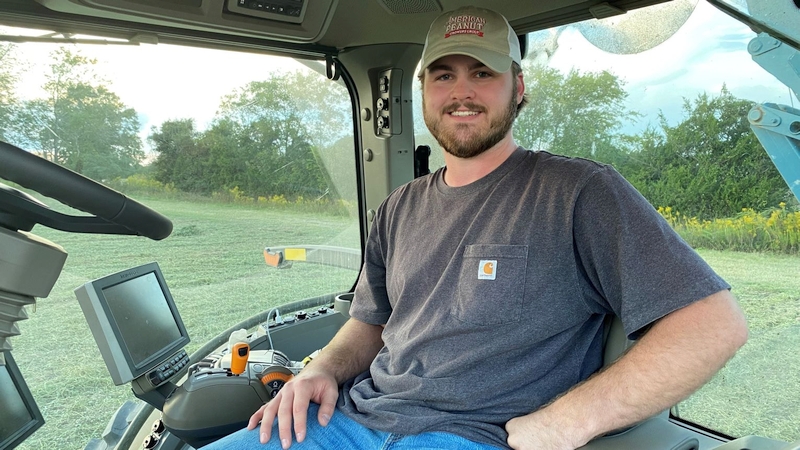Getting Set for #Harvest21
It’s that time in the season when growers are setting their sights on bringing in the harvest. To prep the crop for picking, defoliation is top of mind. Often described as much an art as a science, defoliation timing can be tricky.
There are a number of rules of thumb that growers and consultants follow to time applications. One of the oldest is waiting until 60% to 75% open boll to the pull the defoliation trigger. Another is nodes above cracked boll. Research shows that cotton with four nodes above the highest cracked boll can be harvested without significant losses to yield and quality. Defoliants work best with good boll loads and when most of the nitrogen applied has been used up.
Insect damage also can influence defoliation timing. If early insect damage occurred, waiting until the top crop matures and develops is important. In that case, 60% to 75% open boll standard might not apply. On the other hand, a crop that retained early fruit set may be ready for defoliation at 50% open boll. Of note, the fruit set during the first four weeks of bloom normally contributes 90% to 95% of total yield.
Defoliant applications also should be timed with actual harvest capacity in mind. Harvest aids should be applied about 12 to 14 days prior to picking. Use that benchmark and how many acres can be harvested per day to aid in defoliation timing.
Defoliation and Weeds
For growers in Georgia, this season’s defoliation applications could also have some weed control considerations coming into play. That’s because a wet season made normal weed control more difficult.
“Our growers tried to implement a good weed control program this season, but we’ve had so much rain, it was tough,” says Stanley Culpepper, Extension Weed Specialist with the University of Georgia. “We have had some weeds get through, primarily morningglory. So, growers are going to be thinking about harvest aids with weed control a little more this year. If we would have been able to implement our normal programs, we would not be seeing a problem at harvest.”
Culpepper also notes how critical the dicamba weed control program was this season. “Without dicamba, I am not sure where we would be with pigweed getting away from us,” he says.
Post-Season Weed Control
Tom Barber, Extension Weed Specialist with the University of Arkansas, says growers should target troublesome weeds in the fall and strive to keep them from going to seed. If grasses are a problem, he recommends the addition of glyphosate with defoliation. For redvine, he recommends dicamba post-harvest prior to a killing frost.
“There was a tremendous problem with glyphosate-resistant Italian ryegrass this season,” Barber says. “Hopefully growers and consultants took good notes about where the problem fields were so we can address the ryegrass issue this fall. Previous data indicate that the best control method for glyphosate-resistant Italian ryegrass is to spray residual herbicides containing S-metolachlor (Dual Magnum etc.), pyroxasulfone (Anthem/Zidua) or acetochlor in the fall just prior to ryegrass emergence. The application timing can be tricky because if we spray too early, we will miss it and lose the residual activity, or if we wait too late, it may emerge prior to activation.
“Most years in Arkansas these applications need to be made around the first of November (plus or minus) one week. Past experiences have also taught us if we can kill the initial flush of ryegrass with tillage or nonselective herbicide such as paraquat, we will significantly reduce the amount of ryegrass that will be present in the spring. So, removal of the first flush is crucial to the spring burndown programs.”
Barber adds, grasses in general have become more troublesome. “It seems we have had more issues with grass this year, particularly barnyardgrass, broadleaf signalgrass and goosegrass in our cotton fields, especially in areas that received above average rainfall,” he says. “Many late-season applications of either glyphosate or clethodim were made, but some grasses are likely to escape. With barnyardgrass and goosegrass resistance becoming more of an issue in neighboring counties of Tennessee, we need to keep a close eye on these fields next year for potential heavy flushes in crop and make timely applications with post-emergence herbicides that include a residual for grass control.”










